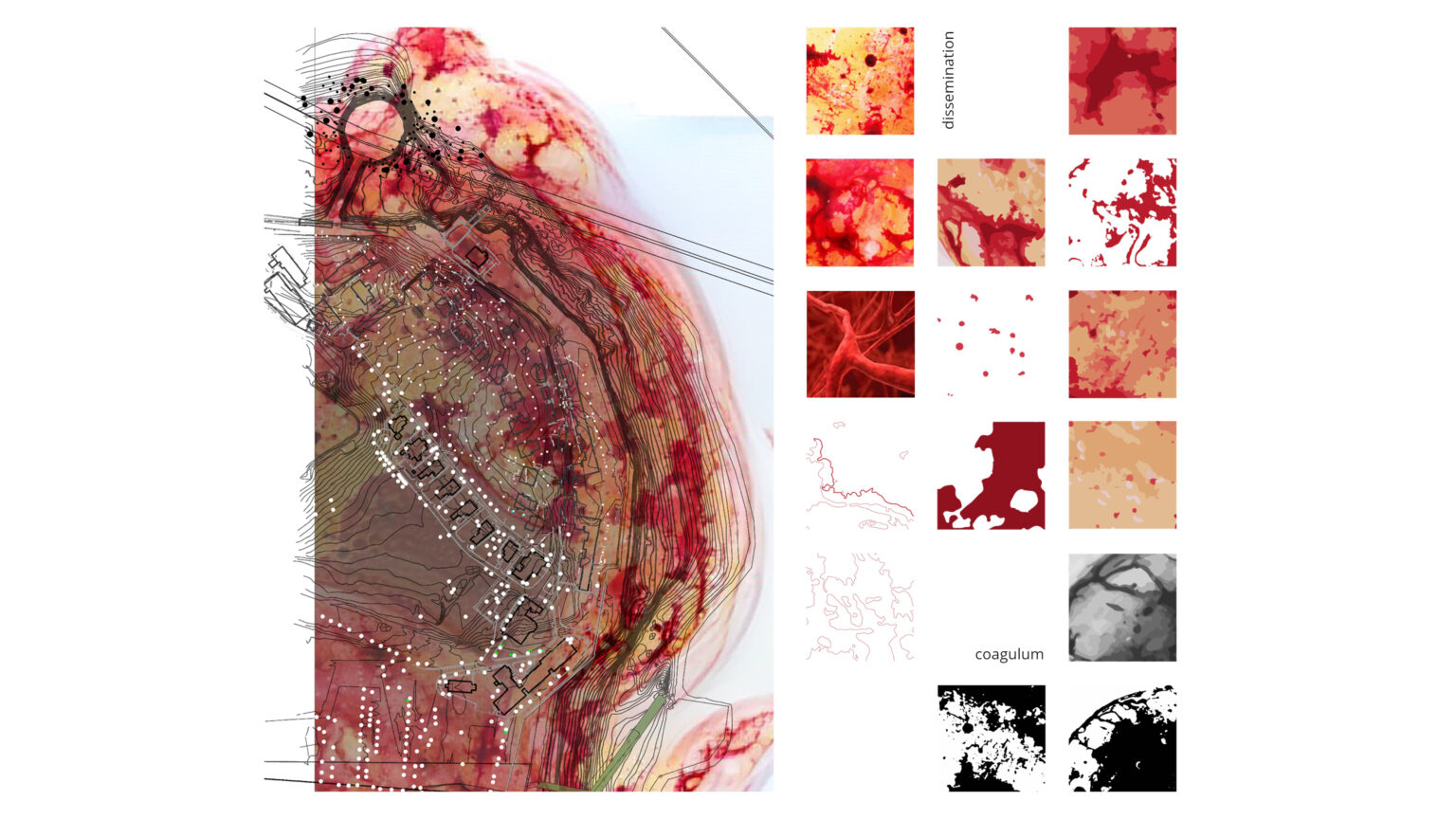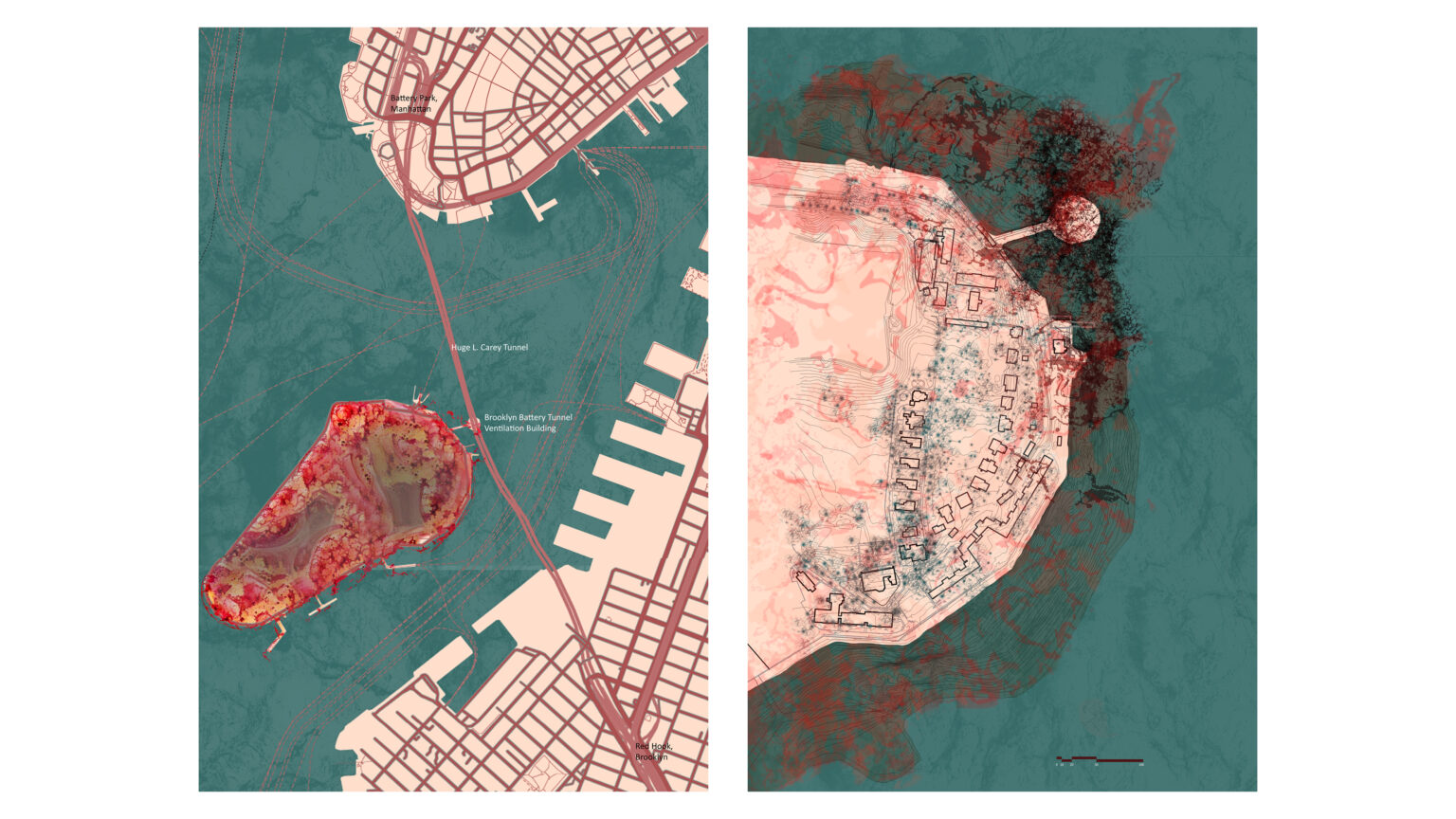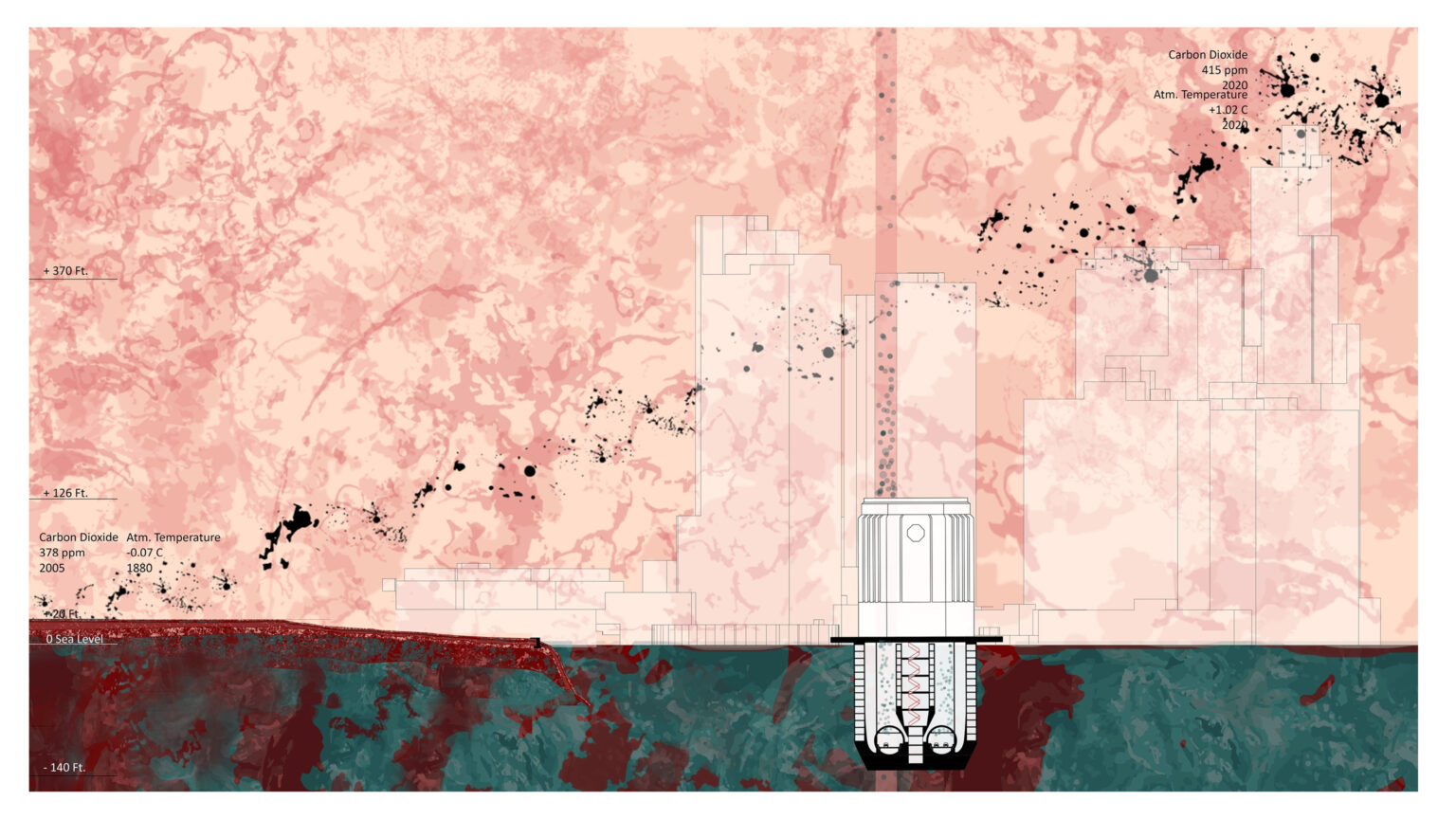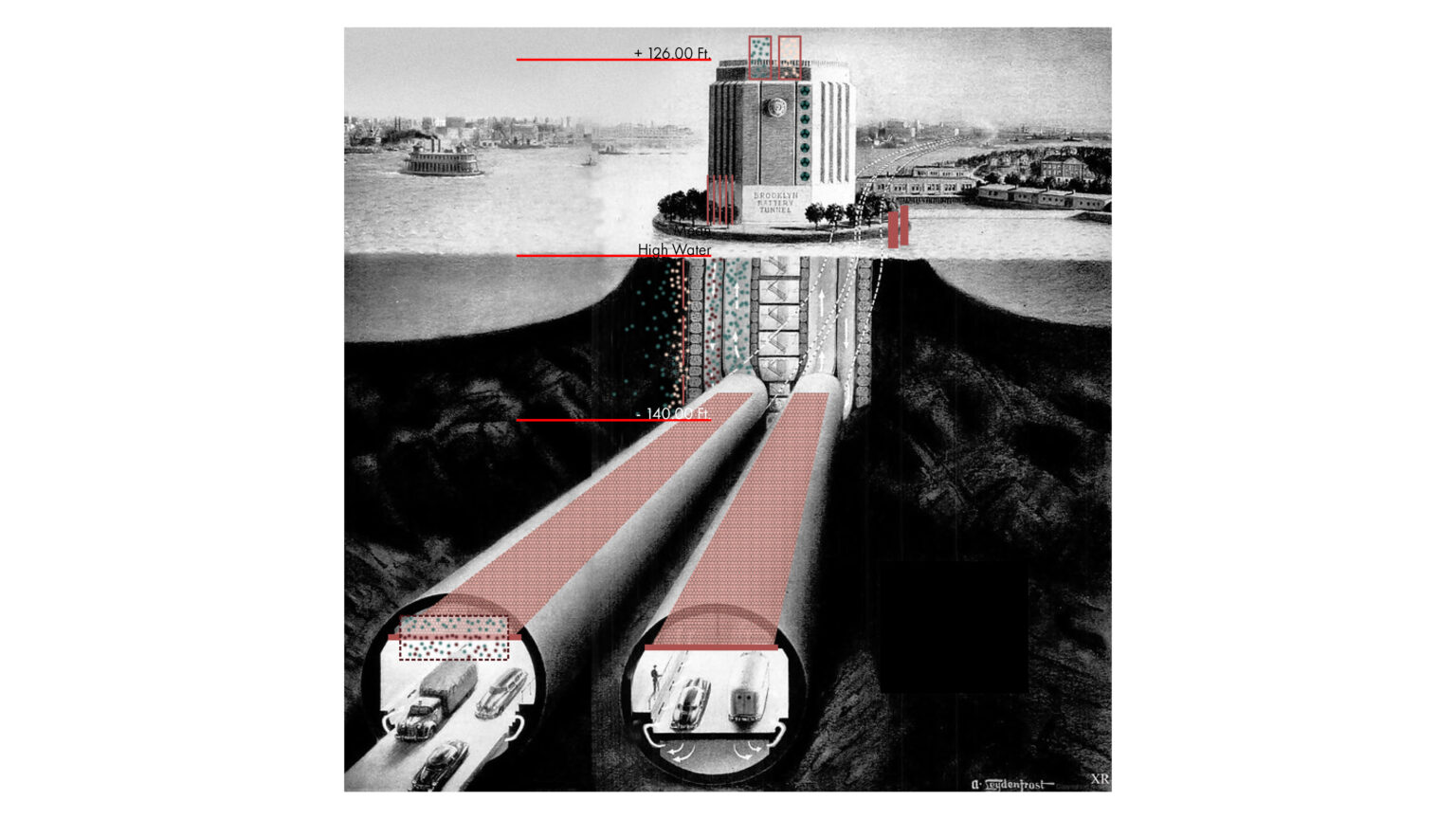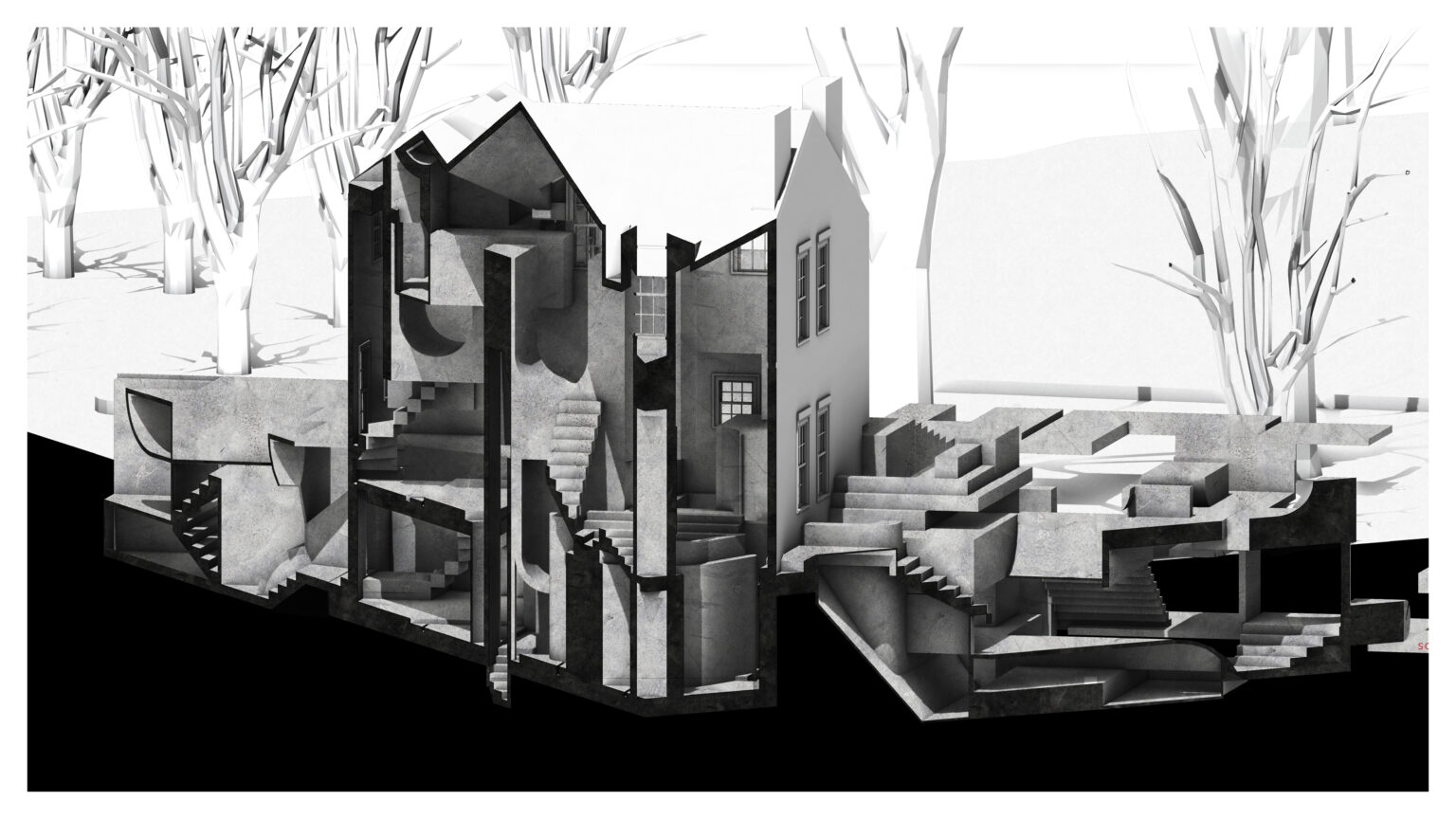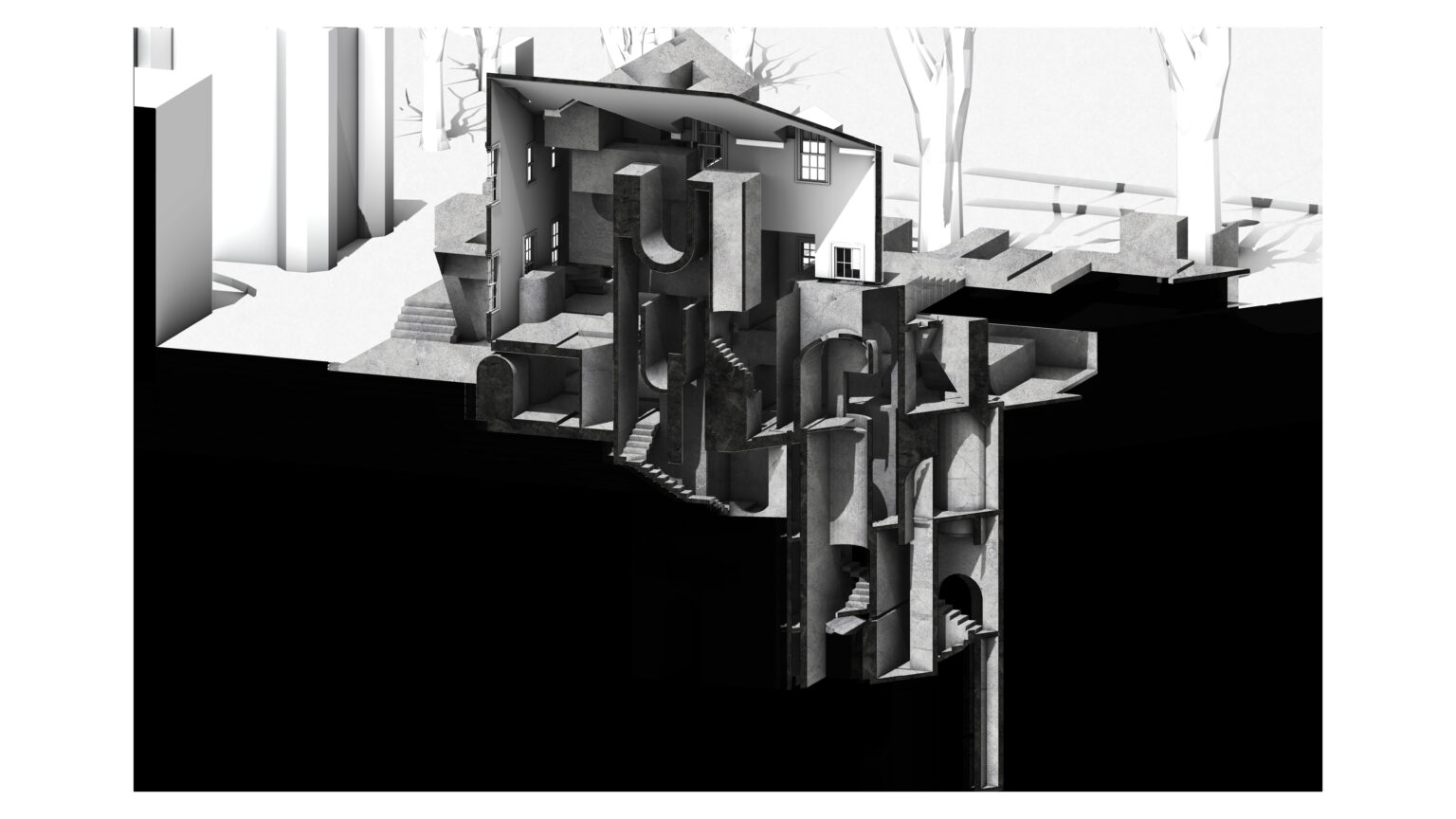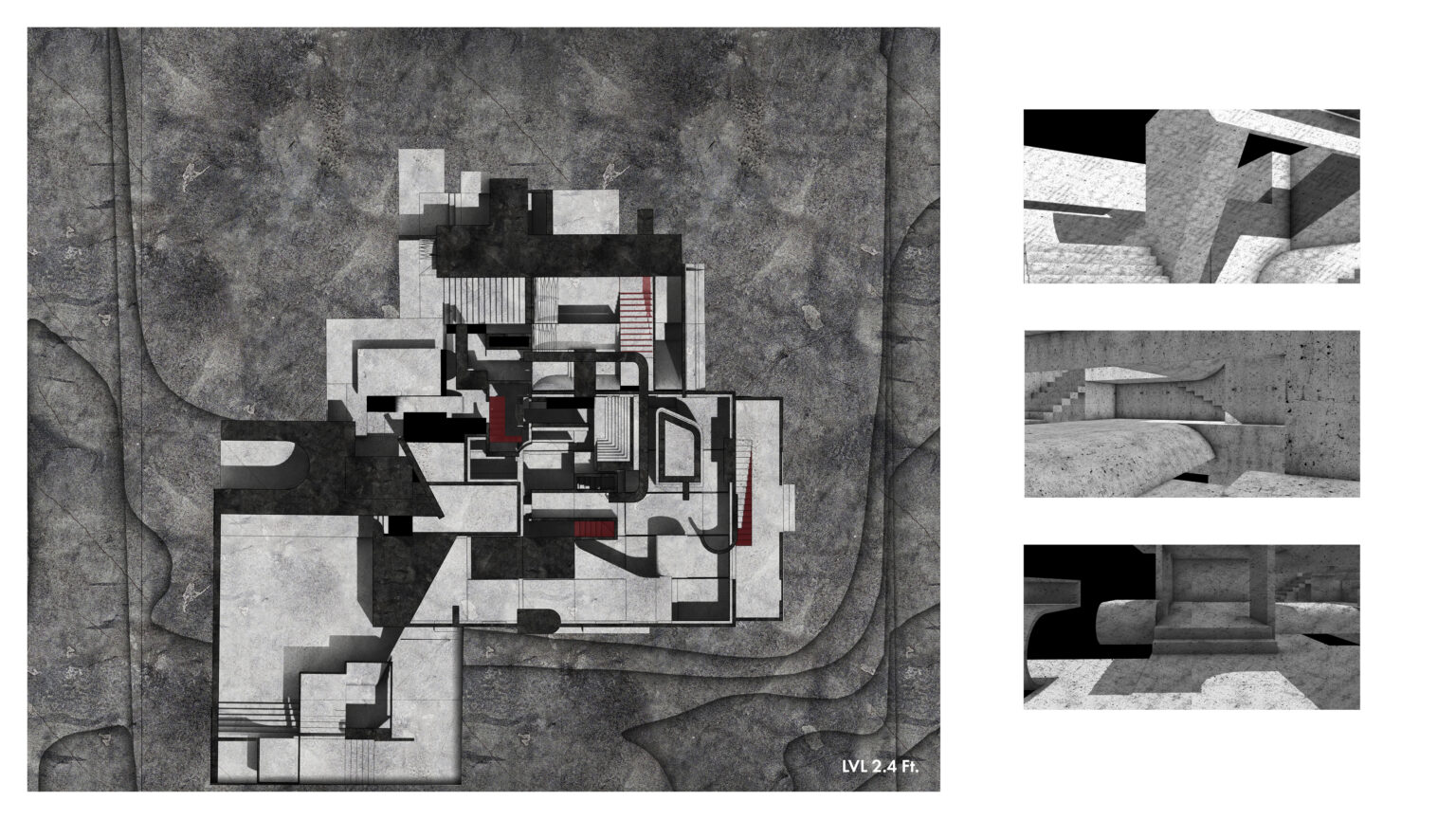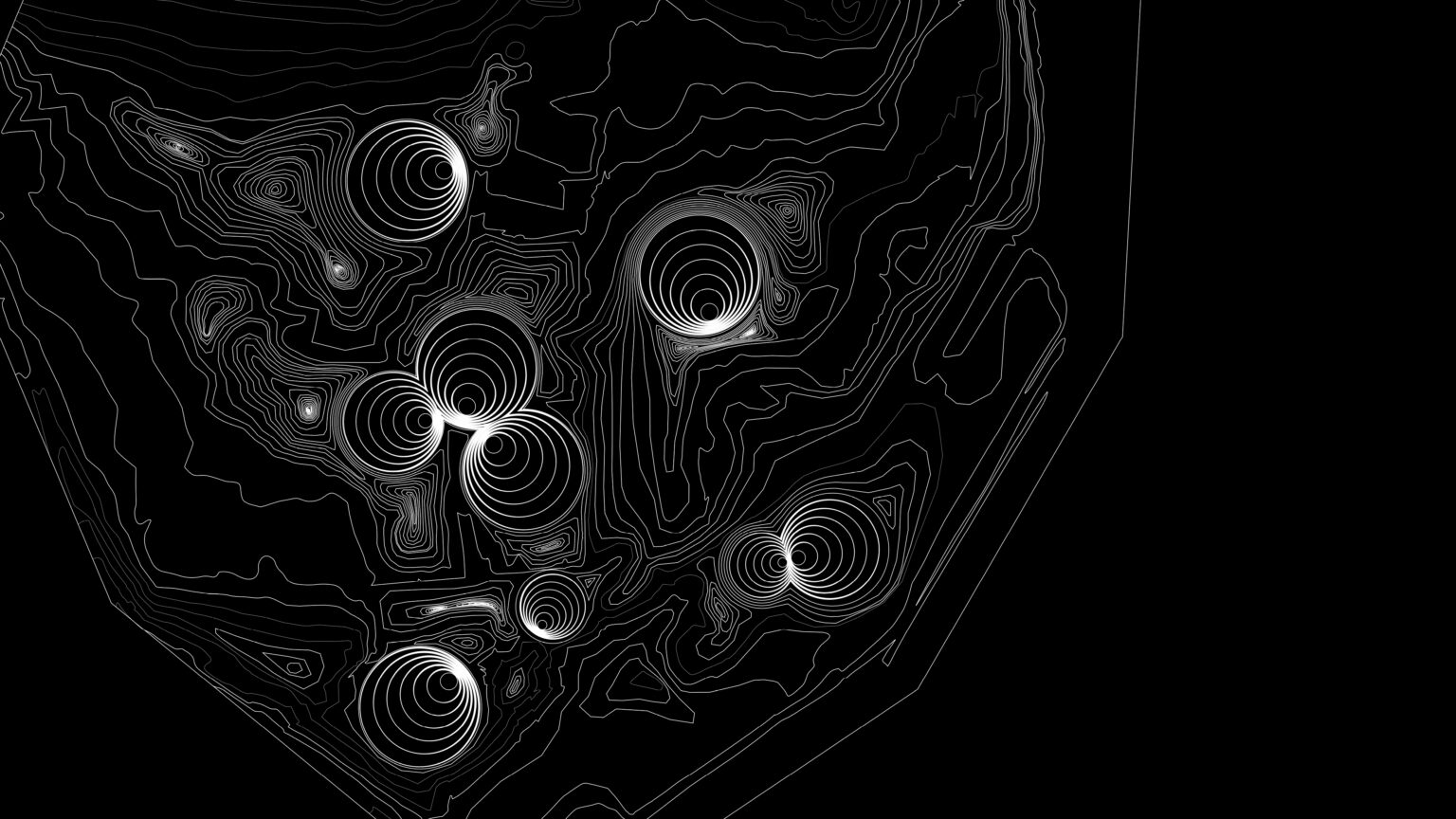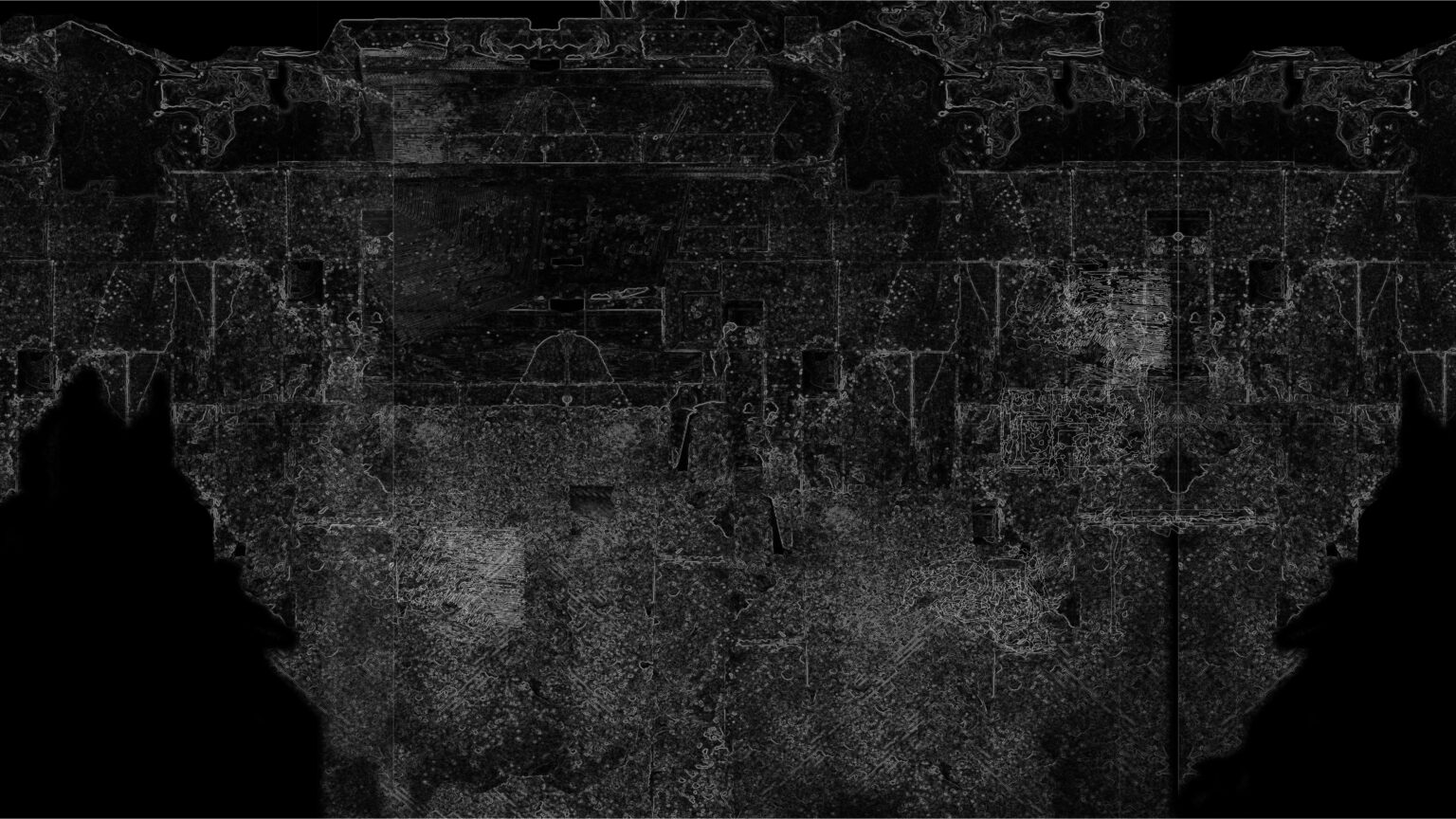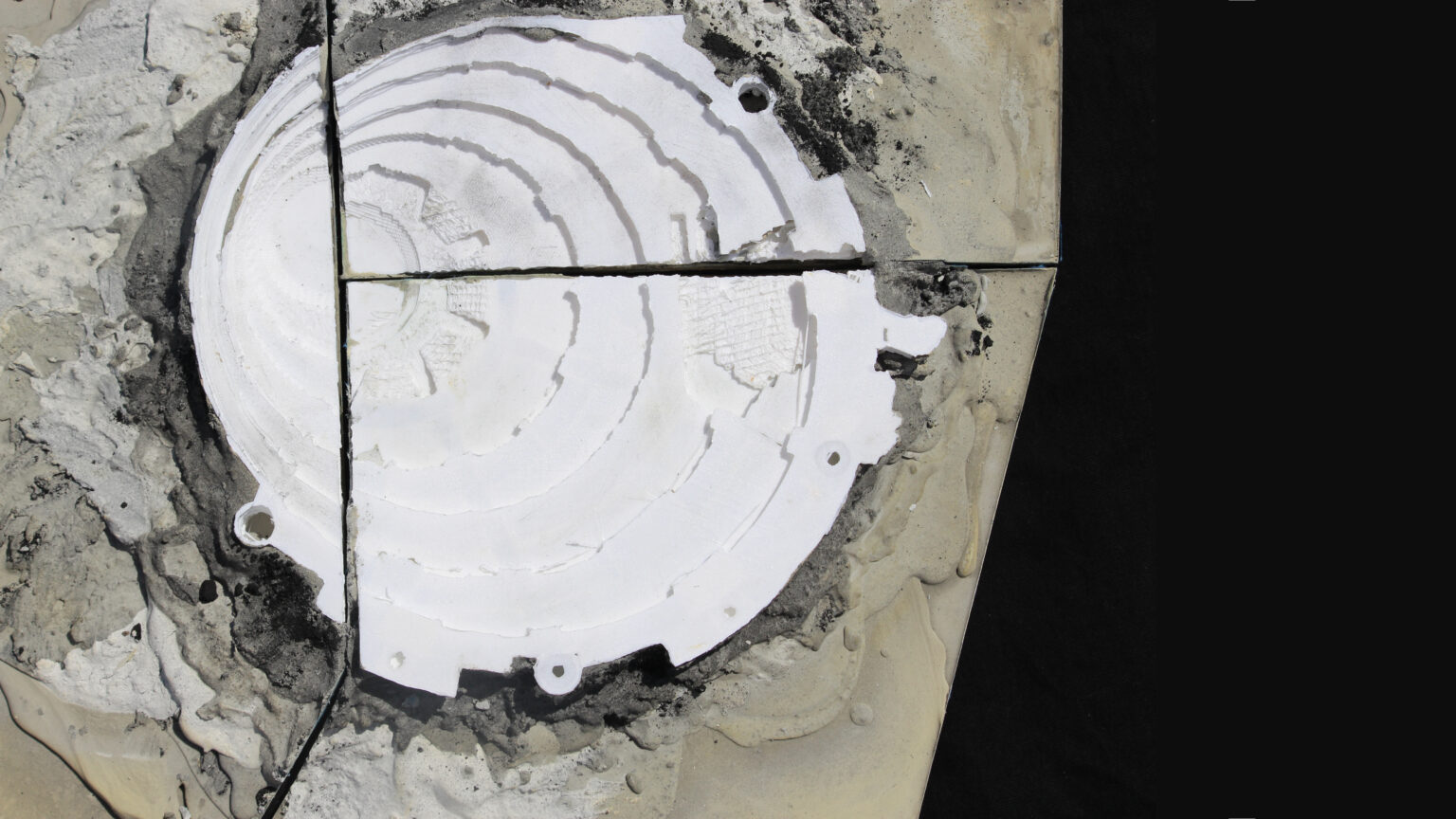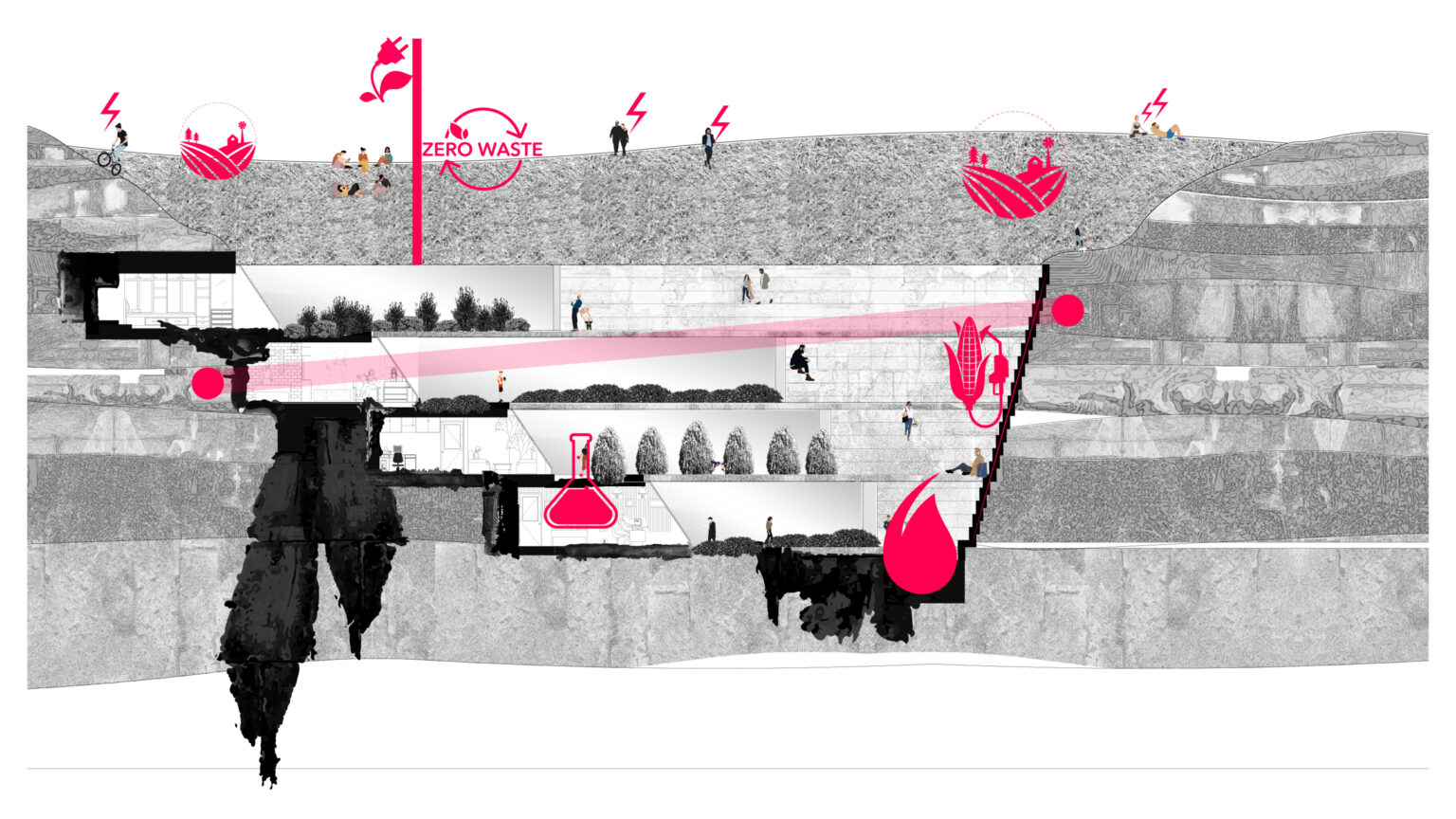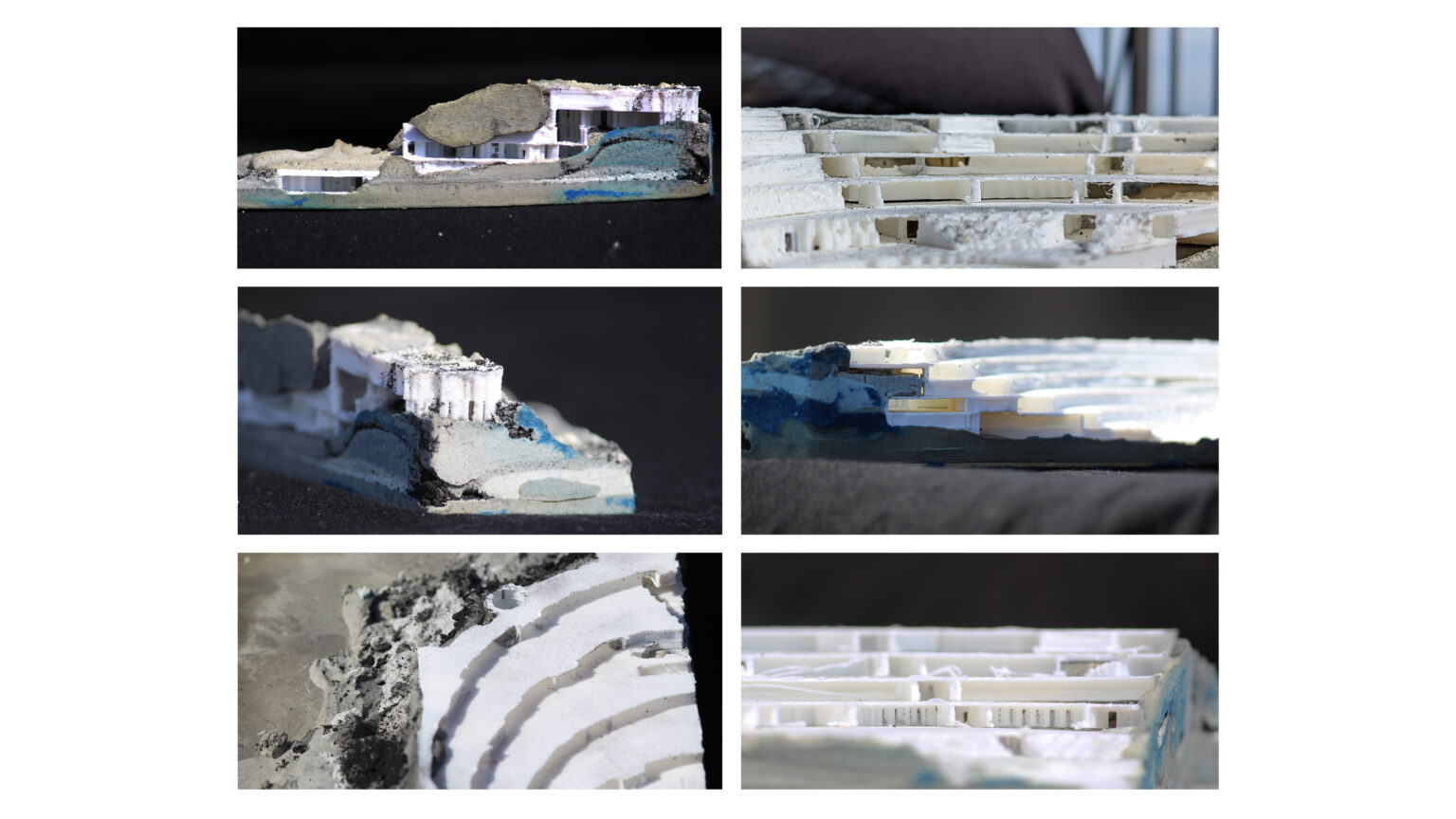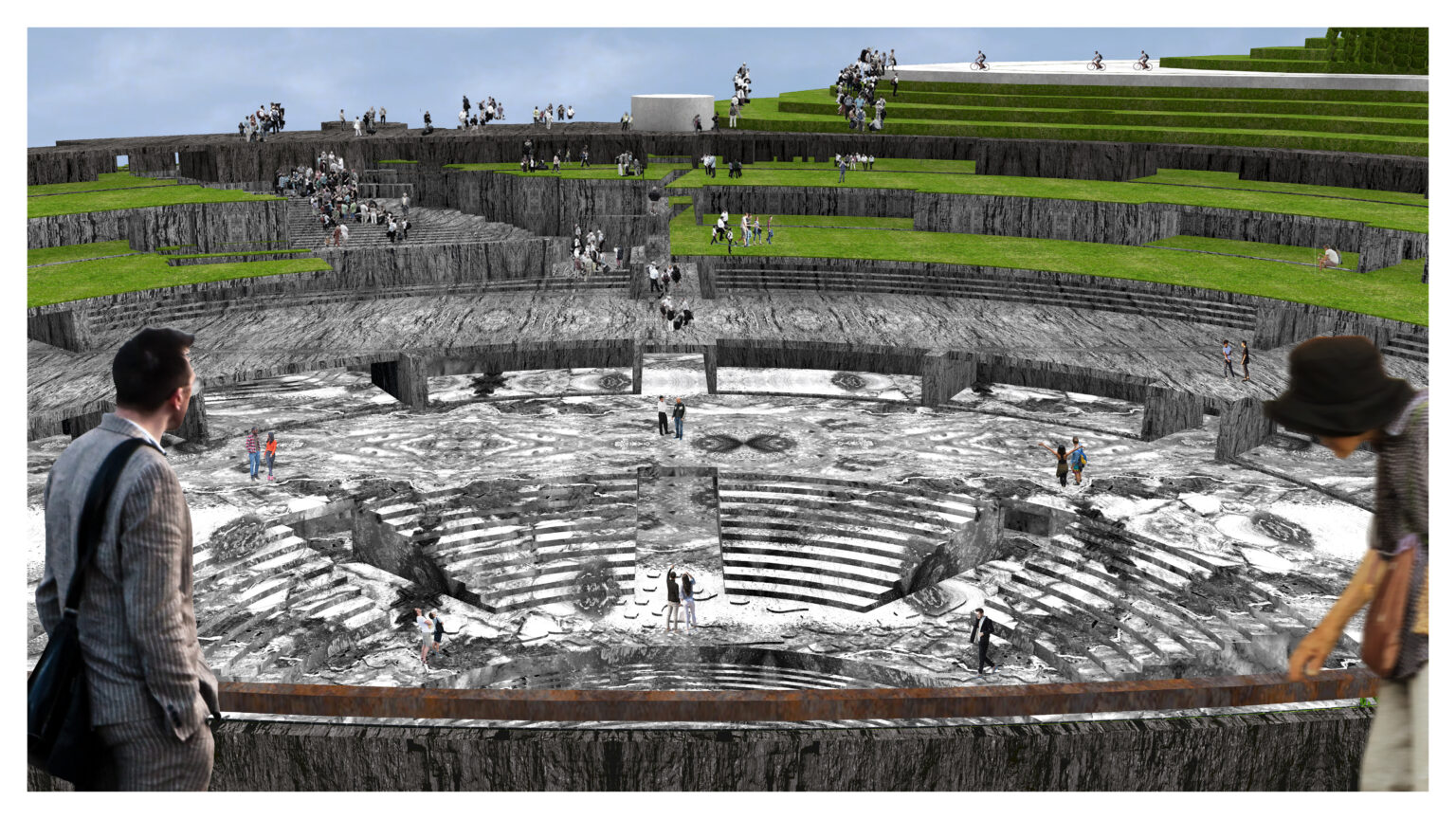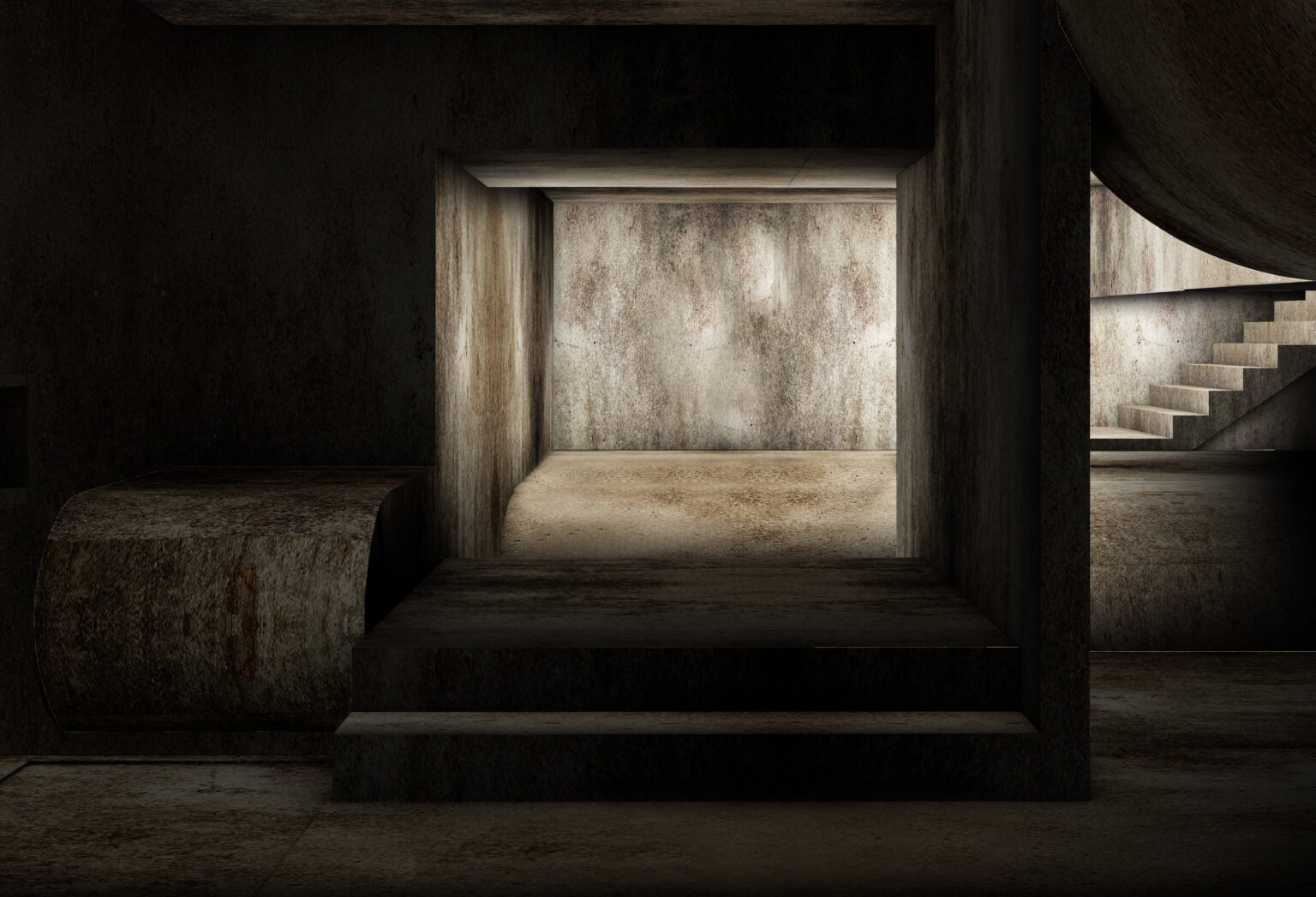Anthro(post)scene
Dhvani Shah
With the directed research at Pratt, I am currently intrigued by the process of capturing carbon at the source of CO2 emissions, and foreseeing a carbon-neutral environment by the year 2050. My design interventions are based on research about carbon sequestration and transforming captured carbon into low environment-impact building materials. The studio projects speak of mines, memorials, museums, and a marketplace, where CO2 impacted environmental losses are mourned while promoting carbon as the new age commodity.
Artist Statement
“Earth Overshoot Day marks the date when humanity’s demand for ecological resources and services in a given year exceeds what Earth can regenerate in that year.”
In 2021, it fell on July 29. Casually scrolling through my Instagram, I read this post while drinking coffee from a venti plastic Starbucks when my flight was about to take off emitting two hundred kilos of carbon dioxide. The idea that we have exhausted nature’s budget for the year and we’ll be living on borrowed time for the remaining five months was extremely unsettling. “From now on, everything we consume will be taken from the future”, phrased the Earthrise Studio.
While imagining this sacrificed future, I leaned towards speculating possible scenarios in the year 2050, and the steps we should initiate in the next three decades in order to have a holistic life as an aware and responsible generation on a breathable planet.
The increase in atmospheric carbon dioxide is central to global warming and climate crisis. Yet could the element of this compound; sequestered, contained, and transformed, produce new mediums for climate resilience?
The aim of the book is to shed light upon the rising global temperature, discuss the role of CO2 in it, and urge people to allow carbon to help keep the warming below 1.5 degree Celcius. The project also stresses the critical importance of a 2030 milestone-65% of CO2 reduction-to possibly achieve a carbon neutral environment by 2050, our only chance before climate change becomes irreversible. As architects, eliminating the embodied carbon of building structure, substructure, and enclosures which accounts for 11% of global GHG emissions is of paramount importance. The book studies the need of different architectural interventions at the end of each decade. Sequestering carbon at its source from automobile emissions, the project first memorialises, in 2050, the environmental losses incurred due to human interventions.
In 2021, it fell on July 29. Casually scrolling through my Instagram, I read this post while drinking coffee from a venti plastic Starbucks when my flight was about to take off emitting two hundred kilos of carbon dioxide. The idea that we have exhausted nature’s budget for the year and we’ll be living on borrowed time for the remaining five months was extremely unsettling. “From now on, everything we consume will be taken from the future”, phrased the Earthrise Studio.
While imagining this sacrificed future, I leaned towards speculating possible scenarios in the year 2050, and the steps we should initiate in the next three decades in order to have a holistic life as an aware and responsible generation on a breathable planet.
The increase in atmospheric carbon dioxide is central to global warming and climate crisis. Yet could the element of this compound; sequestered, contained, and transformed, produce new mediums for climate resilience?
The aim of the book is to shed light upon the rising global temperature, discuss the role of CO2 in it, and urge people to allow carbon to help keep the warming below 1.5 degree Celcius. The project also stresses the critical importance of a 2030 milestone-65% of CO2 reduction-to possibly achieve a carbon neutral environment by 2050, our only chance before climate change becomes irreversible. As architects, eliminating the embodied carbon of building structure, substructure, and enclosures which accounts for 11% of global GHG emissions is of paramount importance. The book studies the need of different architectural interventions at the end of each decade. Sequestering carbon at its source from automobile emissions, the project first memorialises, in 2050, the environmental losses incurred due to human interventions.
Precedent Narrative
Directed Research Book
